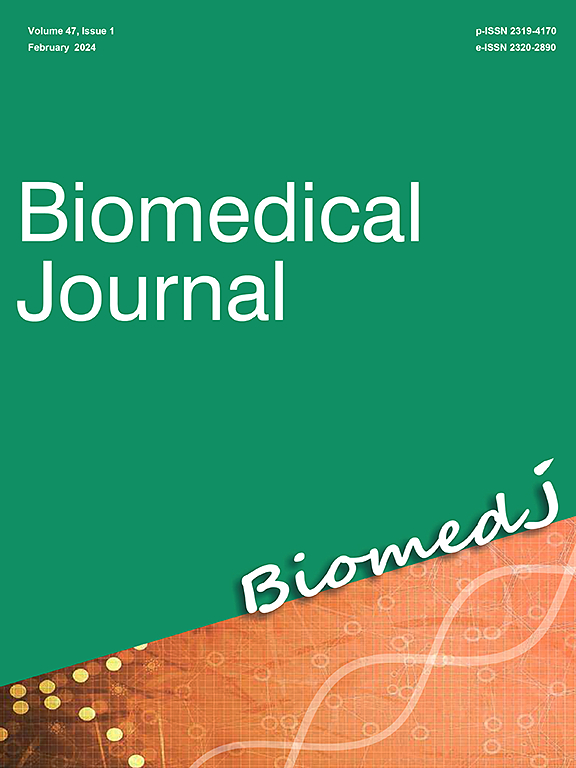当布氏锥虫退出细胞周期时,m6A 的分布更为普遍。
IF 4.1
3区 医学
Q2 BIOCHEMISTRY & MOLECULAR BIOLOGY
引用次数: 0
摘要
N6-甲基腺苷(m6A)是一种在基因表达中起重要作用的 mRNA 修饰。在非洲锥虫中,这种转录后修饰可在数百个转录本中检测到,而且会影响增殖血流形态中变异表面糖蛋白(VSG)转录本的稳定性。然而,m6A 在整个生命周期中的变化情况仍不十分明确。我们使用全长、非碎裂的 RNA,对布氏锥虫三个生命周期阶段--纤细型(增殖型)、粗壮型(静止型)和原环状型(增殖型)--的 m6A 修饰转录本进行了免疫沉淀和测序。我们发现,有 1037 个转录本在这三个生命周期阶段中至少有一个阶段被甲基化。虽然 21% 的甲基化转录本在生命周期的三个阶段中很常见,但总体而言,每个阶段都有一个独特的甲基化组。有趣的是,47%的甲基化转录本仅在静止期的残体中被检测到,这表明当寄生虫退出细胞周期并准备被采采蝇传播时,m6A 起着关键作用。在这一阶段,我们发现相当一部分甲基化转录本编码参与 RNA 代谢的蛋白质,这与它们的转录和翻译减少是一致的。此外,我们还发现并非所有主要的表面蛋白都受 m6A 的调控,因为原环蛋白并没有被甲基化,而且在 VSG 基因库中,并非所有的 VSG 转录本都会在寄生虫分化为原环形态时被去甲基化。这项研究揭示了 m6A 的调控格局是每个生命周期阶段所特有的,随着布氏原虫退出细胞周期而变得更加普遍。本文章由计算机程序翻译,如有差异,请以英文原文为准。
m6A landscape is more pervasive when Trypanosoma brucei exits the cell cycle
N6-methyladenosine (m6A) is an mRNA modification with important roles in gene expression. In African trypanosomes, this post-transcriptional modification is detected in hundreds of transcripts, and it affects the stability of the variant surface glycoprotein (VSG) transcript in the proliferating blood stream form. However, how the m6A landscape varies across the life cycle remains poorly defined. Using full-length, non-fragmented RNA, we immunoprecipitated and sequenced m6A-modified transcripts across three life cycle stages of Trypanosoma brucei – slender (proliferative), stumpy (quiescent), and procyclic forms (proliferative). We found that 1037 transcripts are methylated in at least one of these three life cycle stages. While 21% of methylated transcripts are common in the three stages of the life cycle, globally, each stage has a distinct methylome. Interestingly, 47% of methylated transcripts are detected in the quiescent stumpy form only, suggesting a critical role for m6A when parasites exit the cell cycle and prepare for transmission by the tsetse fly. In this stage, we found that a significant proportion of methylated transcripts encodes for proteins involved in RNA metabolism, which is consistent with their reduced transcription and translation. Moreover, we found that not all major surface proteins are regulated by m6A, as procyclins are not methylated, and that, within the VSG repertoire, not all VSG transcripts are demethylated upon parasite differentiation to procyclic form. This study reveals that the m6A regulatory landscape is specific to each life cycle stage, becoming more pervasive as T. brucei exits the cell cycle.
求助全文
通过发布文献求助,成功后即可免费获取论文全文。
去求助
来源期刊

Biomedical Journal
Medicine-General Medicine
CiteScore
11.60
自引率
1.80%
发文量
128
审稿时长
42 days
期刊介绍:
Biomedical Journal publishes 6 peer-reviewed issues per year in all fields of clinical and biomedical sciences for an internationally diverse authorship. Unlike most open access journals, which are free to readers but not authors, Biomedical Journal does not charge for subscription, submission, processing or publication of manuscripts, nor for color reproduction of photographs.
Clinical studies, accounts of clinical trials, biomarker studies, and characterization of human pathogens are within the scope of the journal, as well as basic studies in model species such as Escherichia coli, Caenorhabditis elegans, Drosophila melanogaster, and Mus musculus revealing the function of molecules, cells, and tissues relevant for human health. However, articles on other species can be published if they contribute to our understanding of basic mechanisms of biology.
A highly-cited international editorial board assures timely publication of manuscripts. Reviews on recent progress in biomedical sciences are commissioned by the editors.
 求助内容:
求助内容: 应助结果提醒方式:
应助结果提醒方式:


